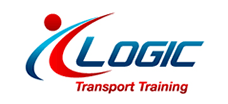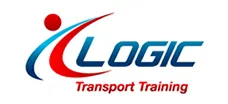Please note – Car and Heavy Driving courses are currently unavailable, please contact us for more information.
Obtain Your Heavy Rigid Licence in Darwin
Description
This course has been designed with you in mind. We provide you with the skills and experience necessary to operate a Heavy Rigid truck safely within your State or Territory as well as in the Transport and Logistics Industry. Our course consists of the required theory and practical components for driving on our roads; we ensure the best possible training and experience. When you have successfully completed the Heavy Rigid course, you will be issued a Statement of Attainment.
Course Content
| COURSE CONTENT / UNITS OF COMPETENCY |
|---|
| Complete pre-operational inspection and documentation |
| Prepare the vehicle for the daily task |
| Safety Checks / Cabin Drill, |
| Prepare and complete pre-departure documentation |
| Steering, Manoeuvring, Positioning and Stopping |
| State/Territory Traffic Act and Regulations |
| Duty of care, truck/bus |
| Practical Driving |
| Braking and Emergency Braking |
| Reversing, maintaining visibility |
| Parking, Shut Down and Securing the vehicle |
| Securing and Maintaining Loads |
| Driver Attitudes and Behaviours |
| Fatigue Management |
| Relevant work health and safety (WHS) |
| Route Navigation and Defensive Driving |
Pre-Requisites
THE REQUIRED KNOWLEDGE FOR THIS UNIT IS AS FOLLOWS:
- Relevant road rules, regulations, permit and licence requirements of the relevant state/territory road traffic authority,
- Relevant OH&S and environmental procedures and regulations,
- Heavy rigid vehicle controls, instruments and indicators and their use
- Heavy rigid vehicle handling procedures,
- Driving hazards and related defensive driving techniques,
- Procedures to be followed in the event of a driving emergency,
- Engine power management and safe driving strategies,
- Efficient driving techniques,
- Pre-operational checks carried out on vehicle and related action,
- Differences between transmission types,
- Map reading and road navigation techniques, including the use of a GPS device where applicable,
- Factors that may cause traffic delays and diversions and related action that can be taken by a driver,
- Workplace driving and operational instructions,
- Principles of stress management when driving a vehicle,
- Causes and effects of fatigue on drivers,
- Factors that increase fatigue-related accidents,
- Fatigue management strategies, including on-road techniques, and
- Lifestyles that promote the effective long-term management of fatigue.
REQUIRED SKILLS
THE REQUIRED SKILLS FOR THIS UNIT ARE:
- Communicate effectively with others when driving a commercial heavy rigid vehicle,
- Carry out pre-operational for the vehicle in the course of work activities.
- Read and interpret instructions, procedures, information and signs relevant to the driving of a commercial heavy rigid vehicle.
- Interpret and follow operational instructions and prioritise work,
- Complete documentation related to the driving of a commercial heavy rigid vehicle,
- Operate electronic communication equipment to required protocol,
- Work collaboratively with others when driving a commercial heavy rigid vehicle,
- Adapt appropriately to cultural differences in the workplace, including modes of behaviour and interactions with others
- Promptly report and/or rectify any identified problems, faults or malfunctions in accordance with regulatory requirements and workplace procedures.
- Implement contingency plans for unexpected events when driving a commercial heavy rigid vehicle,
- Apply precautions and required action to minimise, control or eliminate hazards that may exist when driving a commercial heavy rigid vehicle
- Monitor work activities in terms of planned schedule,
- Modify activities depending on differing operational contingencies, risk situations and environments
- Apply fatigue management knowledge and techniques,
- Work systematically with required attention to detail without injury to self or others or damage to goods or equipment.
- Operate and adapt to differences in equipment in accordance with standard operating procedures,
- Select and use required personal protective equipment conforming to industry and OH&S standards,
- Monitor and anticipate traffic hazards and take appropriate action, and
- Carry out pre-operational of the vehicle in the course of work activities.
Dates, Duration & Fees
Your course theory material must be completed prior to you attending the practical driving—Main Course Duration: 1 to 2 Days.
Call for Pricing
Explore
Our Services
Contact
Accreditations
ABN 85160108770
RTO Provider Number 40611
Trading Hours
- Monday
- -
- Tuesday
- -
- Wednesday
- -
- Thursday
- -
- Friday
- -
- Saturday
- -
- Sunday
- -










